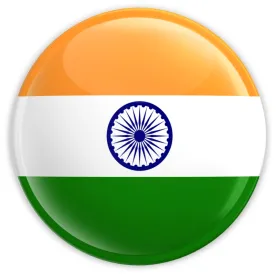Who Should Read This?
U.S. or foreign companies exporting or re-exporting U.S. goods to India, including aerospace, defense and other high-tech goods.
What Happened?
On August 3, 2018, the U.S. Department of Commerce, Bureau of Industry and Security (BIS) published a final rule (83 FR 38018) (the Rule) amending the Export Administration Regulations (EAR) by:
- Moving India from Country Group A:6 to Country Groups A:1 and A:5
- Removing license requirements for India based on National Security Column 2 (NS2)
- Removing the requirement to file Electronic Export Information (EEI) for exports to India of items controlled for Crime Control (CC) Columns 1 and 3 and Regional Stability (RS) Column 2, regardless of value.
These changes expand the range of U.S. goods that may be exported/re-exported to India under the authority of No License Required (NLR) or License Exceptions STA, GOV, and APR, and should particularly benefit the aerospace, defense and other high-tech manufacturing sectors.
License Exception Strategic Trade Authorization (STA)
One of the most significant consequences of the changes is that, due to India's addition to Country Group A:5, it is now possible to use paragraph (c)(1) of License Exception STA to authorize exports, re-exports, and transfers to India, and from India to destinations in Country Group A:5, of U.S. goods for which the applicable reasons for control are limited to one or more of national security (NS), chemical or biological weapons (CB), nuclear nonproliferation (NP), regional stability (RS), crime control (CC), and/or significant items (SI), subject to certain exclusions and requirements.[1] Under STA par. (b)(3)(ii), India's accession to Country Group A:5 also means that STA par. (c) may be used for exports/re-exports/transfers of 600-series goods, subject to certain exceptions specified elsewhere in STA,[2] and the conditions on end-user and end-use set out in par. (b)(3)(ii).[3] In addition, in a development that may benefit some in the life sciences sector, per STA par. (b)(2)(vi), recipients in India are now eligible to receive under STA up to six shipments per calendar year containing no more than 100 milligrams (per toxin) of toxins controlled by ECCN 1C351.d.1 through 1C351.d.10 and 1C351.d.13 through 1C351.d.18.[4]
License Exception Gov For 600-Series and Sensitive List Items
Paragraph (c) of License Exception GOV[5] authorizes certain exports/re-exports to agencies of (i) NATO, (ii) Country Group A:1 governments, and (iii) the national governments of Hong Kong, Singapore, and Taiwan. The addition of India to Country Group A:1 means that it will now be possible to export/re-export goods to Indian government agencies without a license, under GOV. Further, the addition of India to Country Group A:5 means that it will also be possible to use GOV to authorize exports/re-exports to Indian government agencies of 600-series items and items on the Sensitive List (Supplement No. 6 to part 774 of the EAR), a particular boon to the aerospace, defense and high-tech manufacturing sectors.
License Exception Additional Permissive Re-exports (APR)
India's addition to Country Group A:1 also opens up use of License Exception APR,[6] paragraphs (a), (b) and (j), to authorize a broad range of re-exports of U.S. goods to and from India, primarily re-exports from India to other Country Group A:1 countries and Hong Kong, and to India from other Country Group A:1 countries and Hong Kong, subject to requirements that vary with the authorizing paragraph (including but not limited to a requirement for consumption in Hong Kong or a Country Group A:1 country under paragraph (b), and, under paragraphs (a) and (b), restrictions on certain ECCNs and reasons for control, as well as on items previously exported under License Exception STA).
Expanded Use of "No License Required"
In addition to the Country Group changes and consequences described above, the Rule updates the Commerce Country Chart, Supplement No. 1 to Part 738, by removing the "X" for India in NS Column 2. As a result, a significant number of items that previously required use of a license or license exception for export/re-export to India can now be exported/re-exported to India under the authority of No License Required (NLR). These items include the following:
|
ECCN |
Broad Description of Affected Items |
|
|
0 |
0A606.b |
Unarmed ground vehicles derived from civilian vehicles; certain parts and components for ground vehicles |
|
1 |
1A001, 1A002 (except items controlled by 1A002.b.1 in the form of tubes with an inside diameter between 75 mm and 400 mm), 1A003, 1A004, 1A005, 1A006, 1A007 (except 1A007.a when the detonator firing set meets certain parameters and .b), 1A008, 1B001.d.4 (except equipment in 1B001.d that meet or exceed the parameters of 1B101), 1B001.e, 1B001.f, 1B002, 1B003, 1C002 (except 1C002.b.3 or b.4 if they exceed the parameters stated in 1C202), 1C003, 1C004, 1C005, 1C006, 1C007 (except items in 1C007.c when the dielectric constant is less than 6 at any frequency from 100 MHz to 100 GHz for use in "missile" radomes), 1C008, 1C009, 1C010 (except certain fibrous or filamentary materials controlled in 1C010.a, .b, and e.1), 1D003, 1E001 "technology" for items controlled by ECCN 1A004, 1E002.g |
Aerospace parts and components made from fluorinated compounds (such as seals, gaskets, sealants); composite structures; protective equipment; detection equipment; biological agents; body armor; explosive devices and related equipment; charges and related equipment; metals and equipment and tooling for producing metals; conductors; certain fluids, powders, and lubricating materials; related software and technology |
|
2 |
2A001 (except certain radial ball bearings), 2B001 (except 2B001.a, .b, .c, and .d and there are additional exceptions for certain turning machines, bar machines, and milling machines), 2B002, 2B003, 2B005, 2B006 (except items in 2B006.a and .b that meet or exceed the technical parameters in 2B206), 2B007 (except equipment that meets or exceeds criteria in 2B207), 2B008, 2B009 (except certain spin-forming and flow-forming machines), 2D003 |
Bearings and related systems; machine tools for grinding; equipment for inorganic overlays; measuring and image processing machines; spin-forming and flow-forming machines; certain robots; related software |
|
3 |
3A001 (except: "Monolithic Microwave Integrated Circuit" ("MMIC") amplifiers in 3A001.b.2 and discrete microwave transistors in 3A001.b.3, except those 3A001.b.2 and b.3 items being exported or reexported for use in civil telecommunications applications; 3A001.a.1.a when usable in "missiles"; 3A001.a.5.a when "designed or modified" for military use, hermetically sealed and rated for operation in a certain temperature range; pulse discharge capacitors in 3A001.e.2 and superconducting solenoidal electromagnets in 3A001.e.3 that meet or exceed certain technical parameters), 3A002 (except 3A002.h when the parameters in 3A101.a.2.b are met or exceeded), 3A003, 3B001, 3B002, 3C001, 3C002, 3C003, 3C004, 3C005, 3C006 |
Electronic items (such as integrated circuits, microcircuits, and optical waveguides); electronic assemblies and components; equipment related to semiconductor devices and materials; thermal management systems; certain compounds and materials |
|
4 |
4A001 (except items in 4A001.a when the parameters in 4A101 are met or exceeded), 4A003.e, 4A003.g, 4A004 |
Certain computers and related equipment (e.g., radiation-hardened, systolic array) |
|
5 |
5A001.b (except 5A001.b.5), 5A001.c, 5A001.d, 5A001.f (except 5A001.f.1 and 5A001.f.3), 5A001.g, 5B001, 5A003 |
Certain telecommunication and information security systems and equipment |
|
6 |
6A001, 6A002 (except 6A002.a.1, a.2, a.3 (except a.3.d.2.a and a.3.e for lead selenide based focal plane arrays), and .c), 6A003 (except certain items controlled in 6A003.a.2, a.3, a.4, a.6, 6A003.b.3, b.4.a, b.4.b, or b.4.c), 6A004, 6A005 (except lasers controlled by 6A005.a.2, a.3, a.4, b.2.b, b.3, b.4, b.6.c, c.1.b, c.2.b, d.2, d.3.c, or d.4.c that meet or exceed the technical parameters described in 6A205), 6A006, 6A007 (except 6A007.b and .c when the accuracies in 6A007.b.1 and b.2 are met or exceeded), 6A008 (except 6A008.j.1 and certain items designed for airborne applications and that are usable in systems controlled for MT reasons), 6B004, 6B007, 6C002, 6C004, 6C005 |
Acoustic systems and equipment; optical equipment and materials; magnetometers and subsystems; gravimeters and related equipment; laser materials; radar systems, equipment, and assemblies |
|
7 |
7A008 |
Certain underwater sonar navigation systems |
|
8 |
8A001, 8A002, 8B001, 8C001 |
Submersible vehicles and surface vessels; related equipment; water tunnels; materials for underwater use |
|
9 |
9A002, 9A003, 9B006, 9B008, 9B009 |
Marine gas turbine engines and related components and tooling; acoustic vibration test equipment; direct measurement wall skin friction transducers |
Removal of Certain EEI Filing and Reporting Requirements
Before the Rule, 15 C.F.R. 758.1(b)(9) made it mandatory to file EEI for exports to India of items controlled for CC Columns 1 and 3, or RS Column 2, even if the value of the export fell below the usual $2,500 threshold for EEI. The Rule removed this requirement. However, the requirement to file EEI for exports that require submission of a license application remains and, although BIS previously removed license requirements for India based on CC1, CC2 and RS2, per Note 7 to the Commerce Country Chart, a license (and thus EEI filing) is still required for exports to India of ECCN 6A003.b.4.b and 9A515.e items for RS2 reasons.
Finally, the Rule added India to the list of Wassenaar member countries identified in Supplement 1 to Part 743. As a result, exports/re-exports to India are exempted by 743.1(d) from the Part 743.1 reporting requirements otherwise applicable to exports of items on the Sensitive List under License Exceptions GBS, CIV, TSR, LBS, APP, certain sections of GOV, STA, and the Validated End-User authorization.
What To Do Next
If you believe the export/re-export of your item to/from India may now be eligible for a license exception, carefully review Part 740 of the EAR, paying particular attention to the restrictions for use in the text of the specific license exception, as well as the general restrictions on license exceptions in 740.2, and the CCL-based, end-user, end-use, and other special controls in Parts 742 and 744. Exporters who have been using licenses or license exceptions for transfers to India of items that, due to the changes in NS2, no longer require a license, should also be sure to check Parts 742 and 744 before making transfers under the authority of No License Required.
If you already have BIS export licenses for transactions that are now eligible for use of a license exception, you may either continue to use the license, or switch to using the relevant license exception (so long as all requirements are met).
If you have any questions regarding this or any other matter concerning U.S. export controls or economic sanctions, Wiggin and Dana's International Trade Compliance group would be pleased to help. Please contact group co-chairs Tahlia Townsend (ttownsend@wiggin.com) and/or David Ring (dring@wiggin.com).
[1] Requirements include that the purchaser, intermediate consignee, ultimate consignee, and end user all have been approved at some prior time on a BIS or DDTC license, agreement, or General Correspondence, and that the exporter/re-exporter/transferor complies with the conditions in paragraph (d)(1) (including furnishing the ECCN of each item, obtaining a Prior Consignee Statement, and providing the consignee with written notice about which shipments or parts of shipments are authorized under STA). In addition, the items must not be excluded from the scope of STA. For example, STA may not be used for any item that is controlled for reason of encryption items (EI), short supply (SS), surreptitious listening (SL), missile technology (MT), or chemical weapons (CW), or for ECCNs 0A981, 0A982, 0A983, 0A985, 0E982, or 0E987, 1C351.a, .b, .c, d.11, .d.12 or .e, 1C353, 1C354, 1E001, 3A001.b.2 or b.3 (except use in civil telecommunications), certain 3E001 technology, 6A002, 6A990, 6D002, 6D003.c, 6D991, 6E001, 6E002, 6E990, 7E004 (except 7E004.a.7), certain 9D001, 9D002, 9D004 software, certain 9E001, 9E002, and 9E003 technology, and 600-series items identified in the ECCN entry as ineligible for STA, 600-series items that qualify as "600 Series Major Defense Equipment" and have a contract value over $25,000,00. It also may not be used to transfer items controlled under ECCNs 0A606.a, 8A609.a, 8A620.a or .b, or 9A610.a unless and until BIS approves use of STA under the procedures set out in §740.20(g).
[2] See footnote 1, above.
[3] In particular: (i) the ultimate end user must be the armed forces, police, paramilitary, law enforcement, customs, correctional, fire, or a search and rescue agency of a government of the U.S. Government or a Country Group A:5 government; (ii) the transfer must be for the "development," "production," operation, installation, maintenance, repair, overhaul, or refurbishing, in the U.S. or a Country Group A:5 country, of an item that is ultimately either (a) to be used by such government agencies in the U.S. or a Country Group A:5 country, or (b) sent to a person in the U.S. and not for subsequent export under §740.9(b)(1), or (c) for an end-use already authorized by the U.S. Government via a license or other authorization that is still in effect, where the consignee verifies in writing that such authorization exists and has provided the license or other approval identifier to the exporter/re-exporter/transferor.
[4] The 1C351.d toxins at issue are: d.1. Abrin; d.2. Aflatoxins; d.3. Botulinum toxins; d.4. Cholera toxin; d.5. Clostridium perfringens alpha, beta 1, beta 2, epsilon and iota toxins; d.6. Conotoxins; d.7. Diacetoxyscirpenol; d.8. HT-2 toxin; d.9. Microcystins (Cyanginosins); d.10. Modeccin; d.13. Shiga toxins (shiga-like toxins, verotoxins, and verocytotoxins); d.14. Staphylococcus aureus enterotoxins, hemolysin alpha toxin, and toxic shock syndrome toxin (formerly known as Staphylococcus enterotoxin F); d.15. T-2 toxin; d.16. Tetrodotoxin; d.17. Viscumin (Viscum album lectin 1); d.18. Volkensin. We note that 15 C.F.R. 740.20 (b)(2)(vi) also refers to 1C351.d.19, but that entry was removed in early December 2016, when the content of old d.17 ("Verotoxin and other Shiga-like ribosome inactivating proteins") was consolidated into a parenthetical in revised d.13 ("Shiga toxins (shiga-like toxins, verotoxins, and verocytotoxins"), resulting in a list that is one entry shorter.
[5] License Exception "Governments, International Organizations, International Inspections under the Chemical Weapons Convention, and the International Space Station," 15 C.F.R. 740.11.
[6] 15 C.F.R. 740.16





 />i
/>i

